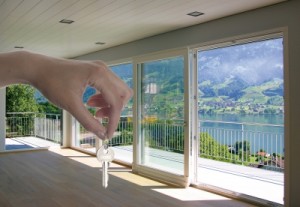Security Deposits, Part I: Inspecting and Documenting the Rental Unit PRIOR to Move-In
Posted by Richardson GriswoldMarch 8, 2011

Landlords often ask tenants for a deposit, or “security deposit”, as a condition of moving into a rental unit. The landlord holds the deposit to safeguard his property against the potential risks of allowing a tenant to live there. At the end of the tenancy, the landlord may lawfully elect to use part or all of the security deposit to pay for:
* Any rent the tenant owes;
* The cost of cleaning the apartment (to restore it to the same condition it was in at move-in);
* The cost of repair of damage beyond normal “wear and tear”;
* The cost to replace personal property (such as keys, furniture, appliances) beyond normal “wear and tear”.
When a tenant first moves into a property, it is wise to completely document the condition of the rental unit when the unit is completely empty, either by video or photos. The tenant should be getting clear evidence of anything that is broken or damaged in the apartment (for example, holes in the wall, broken doorknobs, malfunctioning appliances, etc.). It is likely that a tenant would point out any major concerns to the landlord and ask for them to be fixed upon moving in, like a stovetop that will not light. But if a small problem, like a hole in the wall or crack in the window glass, goes unnoticed for the entire lease term, the landlord may attempt to deduct the cost of repair from the tenant at the end of the lease term. If the tenant took a picture of the hole and can prove it existed before they moved in, they can oppose the landlord’s deduction.
When the tenant is inspecting the property at the outset of the lease term, the other important thing to take notice of is the state of cleanliness. If the rental unit is dirty when the tenant moves in, the landlord cannot charge them for cleaning fees when they move out because the law provides only that a tenant return the property in the same condition of cleanliness as it was when they moved in. Common cleaning practices for new rentals include: steam cleaning the carpets, washing window interiors and exteriors, applying fresh paint on the walls, cleaning all window coverings (blinds and/or curtains), cleaning all appliances included in rental (like the refrigerator and/or stove), and removing all items left behind by former tenants. Since these are the things a landlord is likely to try and charge for at the END of a tenancy, tenants should check to make sure they were done BEFORE the tenancy starts. Remember, a landlord is not required to provide a tenant with a perfectly clean unit, but if they do, a tenant will be expected to return it in the same condition, or pay for the property to be restored to such condition. If the landlord does not provide the tenant with a clean unit, he cannot charge the tenant for cleaning fees upon move out (but again, the tenant will need proof).
It is recommended you consult with a real estate attorney about your landlord-tenant concerns and inquiries.



